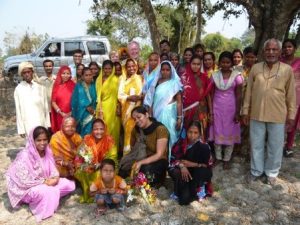INGOs prefer unrestricted funds, often for good reasons. For funders this can feel like: ‘Just give us the money and go away .’ Yet many funders like me want to be part of the process and to offer time and expertise too – based on our experience as strategic philanthropists.
There is growing support today, even among funders in the Global North, for reducing restrictions on funding by shifting power to the front line – to people who have lived and worked there for generations. This is the essence of the #ShiftThePower campaign. However, this approach does not prevent funders from supporting the process by tactfully offering time and relevant skills where requested.
But are funders expected to write blank cheques? No. But some have become accustomed to top-down relationships with “doers” on the front-line. They worry that unrestricted funding would multiply risks – of failure, weak financial controls, mistreatment of women or children, or reputational damage.
There are many ways for funders to reduce risk and make less restricted funding a reality. An important one is to always design new programs in and with the communities where the program will take place. Developing these in Northern offices, a world away in distance, culture, and everyday life heightens risk because the greatest local needs may not be understood. This is a recipe for failure.

Another way is to vary the distribution of power and voice depending on the stage of the program. For the sake of argument, I have divided program development into four main stages:
1. Landscaping includes a literature search, discussions with local communities, government, NGOs, opinion formers and others where the program is located. This avoids reinventing the wheel, enables promising organizations to be identified, and increases understanding. In this Stage, the funder listens, listens, listens, and learns from locals.
2. Initial partner selection – one of the funder’s main tasks: reviewing leadership, quality of people, values, track record, finances, future plans, etc. If well done, this is a big reducer of risk, builds trust and also identifies areas where the funder may be able to help later.
3. Program design. Here purpose, objectives, key deliverables, cost, and measurement are discussed and agreed upon. This is best done in the field with equal sharing of skills and voices. The diverse mix of funders from the Global North and people who live and work in the programme community can add great learning for both sides.
4. Implementation. Within the agreed program design, this is best left to locals on the front line, since they have the main responsibility, local knowledge, and connections. They know how to get things done in their communities. However, funders may also have relevant but different skill sets. Rather than forcing these on locals, funders should let local leaders know what their relevant skills are, and allow them to decide whether, when and how best to use them.
Skilful implementers of programs know their needs and can often see funder skills as an important resource in enhancing program performance. Useful donor skills include agriculture, prioritising, financial management, marketing, strategy, fundraising, but they always have to be adapted to local conditions.
What is my summary answer to the question in the blog title? Funding can be largely unrestricted at implementation, following thorough due diligence by the funder, and equal sharing of voices and skills in program design. Focus on shared values is very important because it builds trust. This approach significantly reduces risk to donors and gives freedom to people on the frontline to do things that work locally.
What do you think? To give your views, please take part in a new global survey on Equal Voices, Collaboration and Scaling with Alliance magazine, Jigsaw Research and H&S Davidson Trust. This is designed to inform the future of the aid sector which is on the cusp of major change. Please help us shape the new future and make your own voice heard. It only takes five minutes to complete, and you can find the survey link here.
This article was curled from Alliance. Written by Hugh Davidson MBE, MA.Chair, H & S Davidson Trust
